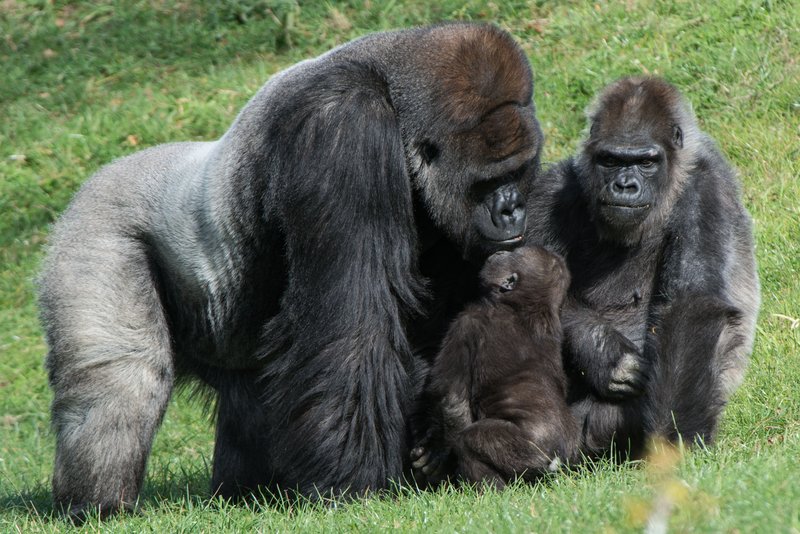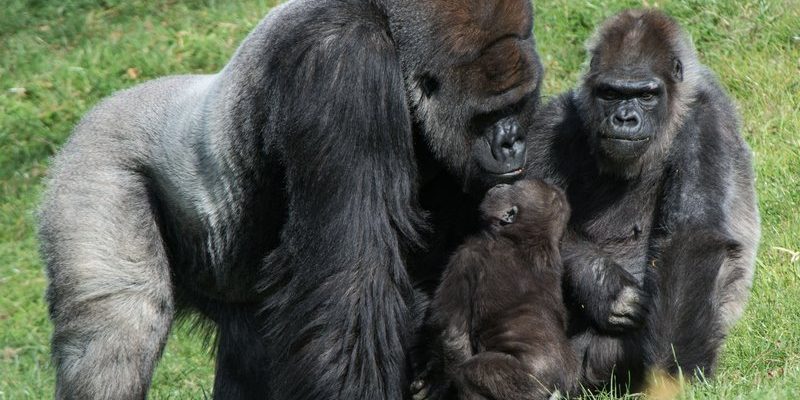
Raising young gorillas in the wild is not just instinctive; it’s a skill passed down through generations. These magnificent creatures live in tight-knit family units, known as troops, where each member plays a role in nurturing and protecting the little ones. If you’re curious about how these remarkable animals go about their parenting, you’ve come to the right place. Let’s dive into the world of Western gorillas and explore their fascinating approach to raising young.
The Family Structure of Western Gorillas
Western gorillas live in groups that consist of a dominant male, called a silverback, along with several females and their offspring. Imagine a family dynamic where the silverback is like the wise grandparent—always keeping an eye on things while providing guidance and security. This social structure is critical for the survival of the young gorillas.
The silverback not only protects the troop but also acts as a father figure. He’s responsible for overseeing the well-being of all members, especially the youngsters. The females, on the other hand, take on the primary caregiving roles. Here’s the thing: while males are protective, it is the females who spend the most time nurturing and teaching the young.
In these family groups, relationships are vital. You’ll often see siblings and cousins playing together, which is essential for their social development. These interactions help them learn important survival skills, like finding food or climbing trees. The warmth of family bonds makes a world of difference in shaping a young gorilla’s character.
The Role of Mothers in Raising Young Gorillas
Mother gorillas are incredibly dedicated and nurturing. Young gorillas, or infants, are born weighing about 4 to 5 pounds, which is quite small for such a large animal. Mothers carry their babies on their backs or cradled in their arms for up to three years. That’s like having a toddler attached to you 24/7—and trust me, it’s no small feat!
During this time, mothers teach their young everything they need to know about survival. They show them how to forage for food, identify safe plants, and avoid predators. It’s like taking your kid on a nature walk and pointing out which mushrooms are safe to eat (and which ones aren’t!). Through gentle nudges and playful interactions, mothers instill these essential life lessons.
Interestingly, gorilla mothers also use vocalizations and gestures to communicate with their young. They might grunt softly to comfort their baby or give a gentle touch to reassure them. This communication fosters a sense of security, building a strong emotional bond that lasts a lifetime.
The Playful Nature of Young Gorillas
You might be wondering how young gorillas learn important skills. A significant part of their upbringing involves play. Young gorillas are naturally curious and playful, much like human toddlers. They often spend hours swinging from branches, climbing trees, and engaging in mock fights. This playtime isn’t just for fun; it’s a crucial part of their development.
Playing helps young gorillas build strength and coordination, preparing them for adult life. They learn how to navigate their environment, test their limits, and develop social skills. It’s during these playful moments that they learn to interact with others, understand boundaries, and develop friendships. You can think of it as their version of a playground, filled with laughter and learning.
Moreover, siblings often engage in play together, which enhances their social bonds. These interactions are vital for establishing hierarchies within the troop and learning how to cooperate with one another. Just like kids in a playground learn teamwork and sharing, young gorillas learn essential social skills through their playful interactions.
Lessons from the Older Generation
Parenting in the gorilla world isn’t solely the responsibility of the mothers. Older siblings, as well as other females in the troop, also play a significant role in raising the young. They help with caregiving, grooming, and even entertaining the little ones. This communal approach to parenting creates a support network that benefits everyone involved.
You can imagine a scene where an older brother or sister is teaching the younger ones how to climb trees or find food. This mentorship is invaluable, as it allows the young gorillas to learn from those more experienced. The more they interact with different members of the troop, the more well-rounded their upbringing becomes.
In fact, young gorillas often mimic the behaviors they observe in the adults around them. They learn by watching, which is a fundamental part of their development. Whether it’s gathering food or socializing with others, this imitation is key to mastering the skills they’ll need as they grow up.
Challenges Faced by Young Gorillas
While the upbringing of young gorillas may seem idyllic, it’s not without challenges. One of the biggest threats they face is habitat loss due to deforestation and poaching. As their natural habitat shrinks, they become more vulnerable to predators and less able to find food. You can think of it like living in a neighborhood where your playground is slowly taken away—you have to adapt quickly or lose the joys of childhood.
In addition, young gorillas are susceptible to diseases. Just like we have to be cautious about germs, gorillas must be careful in their social interactions. A simple cold can be much more dangerous for a baby gorilla than we might think. The troop’s close-knit nature helps to protect against illnesses, but it also means that diseases can spread quickly when they do occur.
Human interference also plays a significant role in the challenges they face. Poaching and illegal wildlife trade put pressure on their populations. Efforts to protect these magnificent creatures are critical, allowing them to thrive in their natural habitat.
Conservation Efforts and their Impact on Young Gorillas
Efforts to protect Western gorillas are crucial for their future. Conservation programs work tirelessly to create safer environments for these animals, focusing on habitat preservation and anti-poaching initiatives. Imagine the dedicated teams of scientists and locals working together like a big family, all for the sake of the gorillas!
One major conservation strategy is creating protected areas where gorillas can live without fear of human threats. These sanctuaries allow them to thrive, and they also educate locals about the importance of gorillas in the ecosystem. This education helps foster a sense of responsibility and stewardship, ensuring that the gorillas have a fighting chance for generations to come.
Some organizations even work to rehabilitate orphaned gorillas, teaching them the skills they need to survive. These efforts not only save individual animals but also ensure the continuation of gorilla families. It’s heartwarming to see how dedicated humans are to learning from gorilla parenting—how we can all play a part in nurturing our planet.
Final Thoughts on Raising Young Gorillas
Raising young Western gorillas in the wild is a beautiful blend of love, skill, and community. From the protective silverback to the nurturing mothers and playful siblings, every member of the troop contributes to the upbringing of the next generation. It’s a powerful reminder of the bonds that exist not only in the animal kingdom but also in our own lives.
As we learn more about these gentle giants, we see the importance of supporting conservation efforts and protecting their habitats. By doing so, we help ensure that future generations of Western gorillas can thrive in the wild, raising their young in peace and security. So, whether you’re a wildlife enthusiast or just someone who appreciates nature, remember that each of us has a role to play in preserving these magnificent creatures for years to come.

